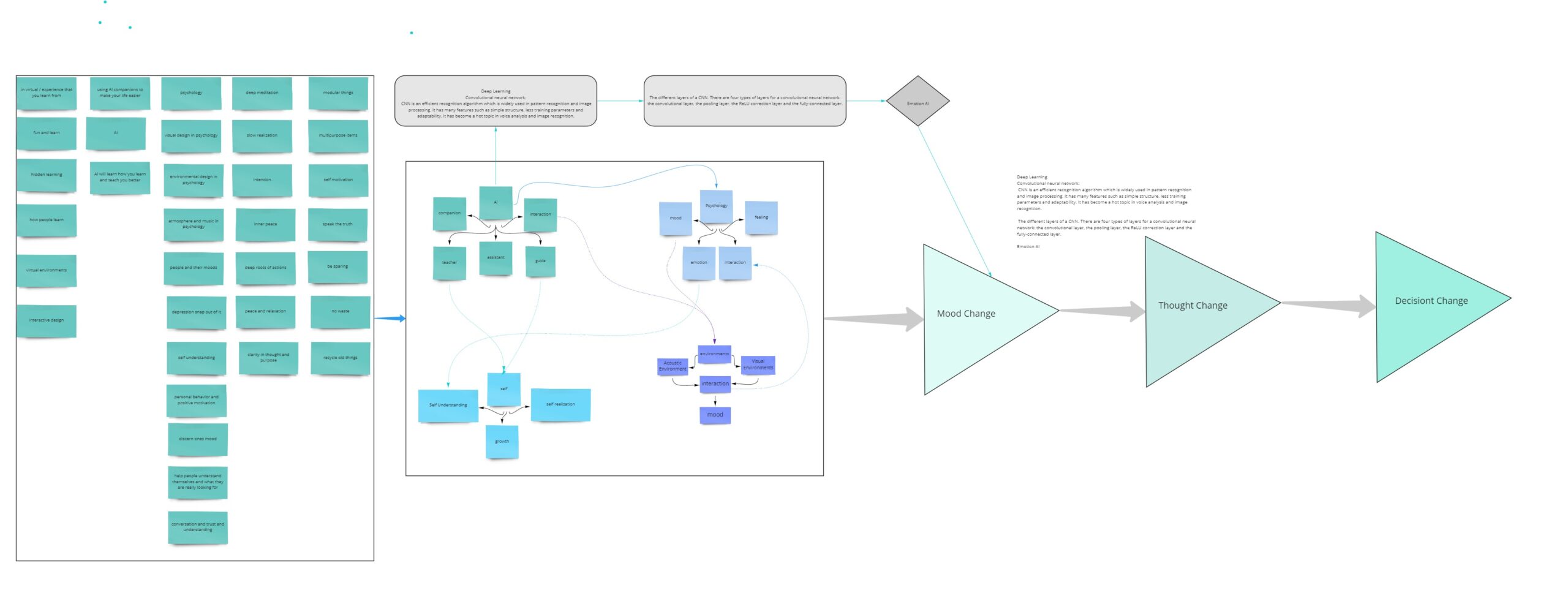Week 2:
‘THESIS’ – Frameworks for approaching thesis research in last week’s reading ‘Research in Art and Design’ by Christopher Frayling, in his own way describes the development of the stereotypical designer/researcher/mad scientist type characterized by media and literature, and the recent evolution of thought, approach and methods in design research.
- Research through Art and Design – explore technology, prototype, test, iterate
- Research for Art and Design – fieldwork, identify, create, test, iterate
- Research into/of Art and Design – explore existing theories, create new methods, test, iterate

My Process Begins:
Or should I say continues from Theory Class…
I looked over the notes, links and channels I had created in Are.na to attain a bit of focus, and followed Wayne Booth’s advice in chapter 3 of ‘The Craft of Research’… free-flowing ideas of what I was interested in. The list was over 30 items; however, they divided into five categories:
- Learning – Approaches
- Artificial Intelligence – Interaction
- Psychology – Mood/Emotion
- Personal Insight – Self Actualisation
- Minimalism – Economy of Use
I was able to combine a few categories to start my initial research into possible topics to further explore. First it began very simply…
Can interactions with AI help to change a person’s mood?
Can using XR interactions help change a person’s decision?
Can XR interactions using AI prevent an individual from harming themselves or others?
Can I enhance this process by designing a conducive acoustic visual environment?
These questions led me to research articles and case studies in Google Scholar, the web and the NYU Database. I categorized the articles I found (some I read just the abstracts, others I delved into several pages, always aware that this was not the time to dig too deep). Took note of recurring themes, keywords and followed the threads. It was very hard for me not to fall into the rabbit hole, not to keep driving into a subject, to keep reading along the same path, to be aware of my time and process.
I had to try to keep it broad enough explore overlooked paths, but not so broad that I ended up drowning in a sea of possibilties. Yet… a thought kept coming back to me… it’s various forms always had the same question. ‘Would the result have been different if there was an unobtrusive AI interaction?’ This question refers back to two incidences in particular where two very good friends ended up making decisions that lethally harmed themselves and/or others. The keyword here for me is unobtrusive. I know that I should not be thinking of this at this point in the process, but it is very important that the AI interaction is casual, fun, light-hearted, open, natural and regular (repeated).
Skimming the dozens of articles and case studies, I knew that AI (emotion AI} was ready for the task, but it lacked one very human aspect “common sense”. But it was being researched. There were many examples of studies where XR and AI were used to assess an individual’s mood and the emotions expressed.
Now, how does it make a difference in the outcome? How would the AI help change not only the mood, but the outcome of a decision weighing on the individual? It’s been shown in studies that interactions have changes moods and emotions in realtime. But does it last and linger, is there learning and understanding happening, is the outcome different? How do we assess the present state of an individual with out being obvious? How can we create lighthearted interactions that make people feel alive, loved, wanted, seen and understood? Can AI do this?


Recent Comments